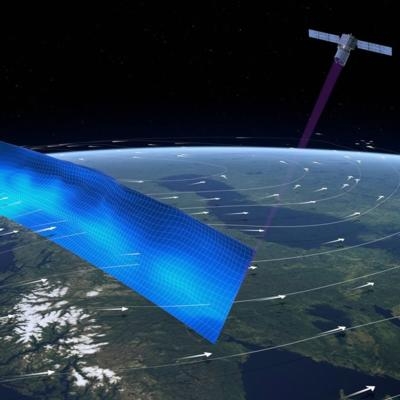Sun, Sep 08, 2019
Company Responds That Communications Error Led To Confusion
A potential collision between two satellites led to a bit of a dust-up between ESA and SpaceX recently, which the U.S. company says was the result of a "bug" in its on-call paging system.

Engadget reports that authorities identified a one in 1,000 chance of a collision between ESA's Aeolus Earth Observation Satellite and SpaceX's Starlink Satellite 44. Holger Krag, head of the Space Debris Office at ESA, told Forbes that when SpaceX was informed of the potential for collision, the company said it would not change the orbit of its spacecraft. ESA fired the thrusters of the Aeolus satellite about half an orbit before the potential collision, if it was going to happen, was anticipated.
While the Aeolus satellite was in position nine months before the SpaceX bird, there are no laws governing right-of-way in space, according to the report. Krag said ESA was not upset by SpaceX's refusal to move, but expressed concerns about how often such an event might happen in the future, given the number of satellites currently in orbit, and the number expected to be launched in the years ahead.
Earlier this week, SpaceX released a statement it hoped would clear up the confusion about its interactions with ESA over the incident.
"Our Starlink team last exchanged an email with the Aeolus operations team on August 28, when the probability of collision was only in the 2.2e-5 range (or 1 in 50k), well below the 1e-4 (or 1 in 10k) industry standard threshold and 75 times lower than the final estimate. At that point, both SpaceX and ESA determined a maneuver was not necessary," the statement said. "Then, the U.S. Air Force's updates showed the probability increased to 1.69e-3 (or more than 1 in 10k) but a bug in our on-call paging system prevented the Starlink operator from seeing the follow on correspondence on this probability increase – SpaceX is still investigating the issue and will implement corrective actions. However, had the Starlink operator seen the correspondence, we would have coordinated with ESA to determine best approach with their continuing with their maneuver or our performing a maneuver."
(Image from file)
More News
Airport Marking Aids Markings used on runway and taxiway surfaces to identify a specific runway, a runway threshold, a centerline, a hold line, etc. A runway should be marked in ac>[...]
"It is extremely difficult, if not impossible, for manned aircraft to see a drone while conducting crop-enhancing and other aerial applications at low altitudes and high speeds. We>[...]
Aero Linx: The Skyhawk Association The Skyhawk Association is a non-profit organization founded by former Skyhawk Pilots which is open to anyone with an affinity for the A-4 Skyhaw>[...]
“The T-54A benefits from an active Beechcraft King Air assembly line in Wichita, Kansas, where all required METS avionics and interior modifications are installed on the line>[...]
Aero Linx: Aerostar Owners Association The Association offers the Aerostar Owner a unique opportunity to tap an invaluable source of information concerning the care and feeding of >[...]
 ANN's Daily Aero-Term (04.28.24): Airport Marking Aids
ANN's Daily Aero-Term (04.28.24): Airport Marking Aids Aero-News: Quote of the Day (04.28.24)
Aero-News: Quote of the Day (04.28.24) ANN's Daily Aero-Linx (04.28.24)
ANN's Daily Aero-Linx (04.28.24) Aero-News: Quote of the Day (04.29.24)
Aero-News: Quote of the Day (04.29.24) ANN's Daily Aero-Linx (04.29.24)
ANN's Daily Aero-Linx (04.29.24)



